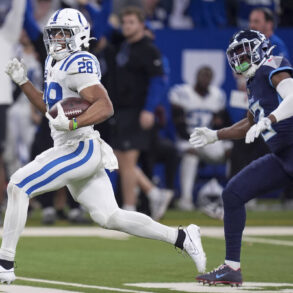Former Houston Oiler quarterback Gifford Nielsen says time has changed some of the nuances of NFL teams over the years — some for the better, some not.
Nielsen, who was recently granted emeritus status as a General Authority Seventy in The Church of Jesus Christ of Latter-day Saints, is now using his free time to golf and spend needed time with his children and grandchildren from his home base in St. George. He has appeared on podcasts, TV and radio shows and shared his opinions generously.
Last fall at a golf event at Sand Hollow, I asked Nielsen to share his opinion on how the NFL has evolved. As a former TV sportscaster in Houston, Nielsen has remained plugged into personalities, friends, players, coaches and other media members.

Special Collector’s Issue: “1984: The Year BYU was Second to None”
Get an inclusive look inside BYU Football’s 1984 National Championship season.
“You know, you have more packages for situational football than when I played,” he said of the increased sophistication and specialty of the game.
“It’s become a lot of matrix on what to do on fourth down even. I sit and watch some of these games and I’m thinking to myself, just kick the field goal. Because we were always thinking of just putting points on the board. It’s so foreign to me. They are deciding to go for it on fourth-and-two on the 40-yard line. I think the matrix (analytics) used in today’s game, even in all professional sports, be it basketball, baseball and especially football — even college sports — has been a big difference.”
Nielsen was an All-American QB at BYU and was inducted into the College Football Hall of Fame in 1994. He played six seasons for Houston after he left BYU, both as a starter and backup to Dan Pastorini and Ken Stabler.
Nielsen said in professional ball, the movement of players between teams with free agency and trades has made a change in the game. “I think it has lessened the quality of the game but hasn’t taken away the excitement of the game.”
Nielsen said in his day when he played in the late ‘70s and early ‘80s for Houston, his teammates were players who he competed with for a very long time and built relationships.
“That Steel Curtain defense was together for a very long time. Jack Lambert, Mean Joe Green, L.C Greenwood, Ernie Holmes and Dwight White stayed together for a long time. Those players for Dallas were together for a long time and that’s just the way it was.
“They knew exactly what to do, how to line up, how to execute a scheme, break down a blocking scheme and blitz and get to the quarterback. Now, you have players moving around so much they have to learn what to do and how to do it with different people and that takes time. It’s a challenge. That’s changed from back in the day.”

Nielsen said, “If you look at offenses today in the NFL, a lot of it is the same we put in our BYU offense back in 1976 with Doug Scovil. If you look at the passing trees, all the passing routes, the calls, the coaches who are coaching today and how they are influenced today by what Scovil put in at BYU, it is remarkable in similarities to what LaVell Edwards talked about and wanted to do when Scovil joined him.
“You only have to look at Andy Reid with Kansas City and see what he’s doing and then look at the coaches who have branched out from what he’s been doing and what they’ve taken to other teams.”
Reid’s coaching tree includes Sean McDermott (Bills), John Harbaugh (Ravens), Matt Nagy (Bears, Chiefs), Doug Pederson (Eagles, Jaguars), Ron Rivera (Panthers, Commanders), Todd Bowles (Dolphins, Jets, Buccaneers), Pat Shurmur (Browns, Eagles, Giants), Leslie Frazier (Vikings), Steve Spagnuolo (Rams, Chiefs) and Brad Childress (Vikings).
Nielsen watches NFL games these days and his brain reengages. His eyes see schemes he learned and practiced, options and reads flash before him, a lot looks familiar to what he saw at BYU when he’d dropped back and looked at progressions and route targets.
“It’s pretty remarkable the offenses they are running are offshoots of what we did back at BYU in the ‘70s,” said Nielsen.

This post was originally published on this site be sure to check out more of their content.





